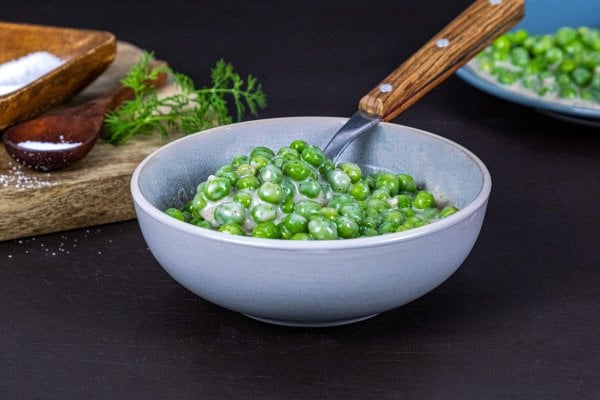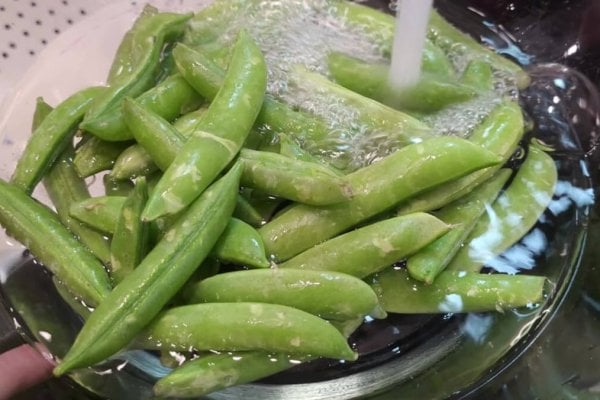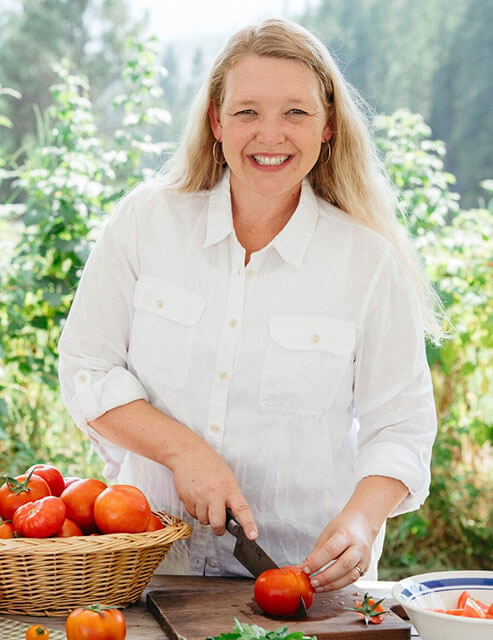Milk kefir is a cultured dairy product similar to drinkable yogurt. Homemade raw milk kefir preserves all of the beneficial bacteria and enzymes you don’t always get in a store-bought version. Use this tutorial to start making yours at home and enjoy the full goodness kefir has to offer.

Why You Should Learn How to Make Kefir
Learning how to make kefir is a great place to start if you are new to fermentation. Perhaps you have dairy animals on the homestead and need to know what to do with raw milk. Or, maybe you want to live more frugally and make homemade dairy products practical.
Whatever your motivation, kefir is a wonderful solution that provides the probiotic goodness and tangy flavor of other cultured dairy (think homemade yogurt and raw milk cottage cheese… yum!)
It can easily be tailored to either sweet or savory preparations, making it a versatile ingredient in many recipes, too.

Health Benefits of Kefir
Kefir contains the calcium, vitamin D, phosphorus, magnesium, and vitamin K you would expect from a glass of milk, but due to the fermentation process, it also provides beneficial bacteria and yeasts that could lead to improved gut health, helping to boost the immune system. (Source)
Furthermore, these beneficial bacteria also work to break down the lactose in the milk, making it much easier for our bodies to digest. (Source)

Ways to Use Kefir
It’s important to note that the beneficial bacteria in kefir will die off when heated. So, while you can use it for the flavor in baking and cooking, you won’t receive the same health benefits.
Here are our favorite ways to use kefir:
- Smoothies – Add kefir to your favorite smoothie recipe for extra probiotics and protein.
- Dips – Replace milk or sour cream with kefir to enhance the nutrition and add a special tang to your favorite creamy vegetable dip.
- Salads – Using kefir as a base for homemade salad dressings is our favorite! It adds a tangy and creamy texture to our buttermilk ranch dressing recipe.
- Starter Culture – Kefir works as a wonderful starter culture for many recipes such as marinated cheese. If you strain out some of the whey from kefir, you can also use that in fermented ketchup, pickled garlic, and even homemade cranberry sauce.

The Homestead Kitchen
This tutorial on how to make kefir was featured in issue No.43 of the Homestead Kitchen magazine. If you desire a life of self-reliance but find yourself scrolling through social media, watching the lives of others who are fulfilling YOUR dream, then this magazine was designed just for you.
Our goal as established homesteaders is to share all we have learned, both the good and bad, to support you and help you build the confidence you need to chase your homesteading dreams.
Enter the Homestead Kitchen magazine. This beautiful, well-designed magazine, curated with homesteading information like recipes, DIY instructions, tips and tricks, and easy-to-follow guides, will save you time and headaches on your homesteading journey.
The response has been so great that this magazine is now available in print! So subscribe today to have your monthly copy delivered right to your mailbox.

How to Make Kefir
Supplies Needed
- ½ Gallon Jar – To prepare glass jars for fermentation, simply wash them with hot, soapy water and allow them to air dry.
- Cheese Cloth – If you don’t have cheesecloth on hand, you can use a coffee filter or a clean tea towel.
- Rubber Band – If you don’t have a rubber band handy, you can use kitchen string or a canning jar ring to secure the cheese cloth.

Ingredients Needed
- Milk Kefir Grains – We purchase our grains from Cultures for Health.
- Whole Milk – You can substitute another animal milk, like sheep or goat, or a plant-based milk, like coconut milk. Homesteading Hack: If you choose plant-based milk, make sure you revitalize the grains in dairy milk for 24 hours periodically to keep the grains active. If purchasing milk from the store, try to source organic milk and stay away from ultra-pasteurized milk because it will not ferment correctly.






Step-by-Step Instructions
- Measure milk kefir grains into a clean, half-gallon jar.
- Add one quart of milk.
- Cover the mouth of the jar with a coffee filter, tea towel, or cheesecloth and secure with a rubber band.
- Let the milk sit at room temperature until it is your desired thickness and sourness. This usually takes between 12 and 36 hours, based on your preference and the temperature in your kitchen. Don’t worry about leaving it out for 36 hours. The longer fermentation just means a thicker and more sour end product with more probiotic benefits.
- After fermentation, strain out the kefir grains. Use the kefir immediately or keep it in cold storage (below 50°F) with a lid for up to two weeks.
- The strained grains can be used to start a new batch of milk kefir or stored in the refrigerator. To store, simply place the grains in a small glass jar and pour milk or milk kefir over them to cover.
Did you make homemade kefir? If so, please leave a star rating with your comments in the recipe card below. Then snap a photo and tag us on social media @homesteadingfamily so we can see!

FAQ
Homemade raw milk kefir is packed with beneficial bacteria and enzymes. It supports your gut health, boosts your immunity, and aids digestion.
Making kefir at home is easy. You need kefir grains, milk (dairy, coconut, or plant-based), and basic tools like glass jars. Mix the grains and milk, let it ferment at room temperature for 12-36 hours, and you’ll have homemade kefir ready to enjoy.
The milk you choose affects the product’s thickness and taste. You can use dairy, coconut, or other plant-based milk, but we prefer raw cow’s or goat’s milk.
To keep your grains healthy, keep them in fresh milk in the refrigerator when not using them. This allows you to reuse the grains for many batches.
Homemade kefir can last up to two weeks in the fridge. The exact shelf life depends on the milk type and fermentation. Always check the appearance and smell to ensure it’s fresh and safe.
Making kefir at home is usually cheaper than buying it. The initial cost of kefir grains and supplies is offset by long-term savings.
Other Posts You May Enjoy
- What to Do With Raw Milk
- Easy Instant Pot Yogurt Recipe (Step-by-Step)
- Homemade Ice Cream Recipe for Ice Cream Maker
- Starter Culture for Fermentation (+ Freeze Drying Tips)
- Best Foods to Ferment (And What You Should NOT Ferment)
- What to Do With Raw Milk
- What is Fermentation? A Beginner’s Guide to Getting Started

Homemade Kefir Recipe
Equipment
- 1/2 Gallon Jar
- cheesecloth or coffee filter
- Rubber Band or metal canning band
Ingredients
- 4 Tablespoons milk kefir grains
- 1 quart whole milk or milk alternative
Instructions
- Measure milk kefir grains into a clean, half-gallon jar.
- Add one quart of milk.
- Cover the mouth of the jar with a coffee filter, tea towel, or cheesecloth and secure with a rubber band.
- Let the milk kefir sit at room temperature until it is your desired thickness and sourness. This usually takes between 12 and 36 hours, based on your preference and the temperature in your kitchen. Don’t worry about leaving it out for 36 hours. The longer fermentation just means thicker and more sour kefir with more probiotic benefits.
- After fermentation, strain out the kefir grains. Use the kefir immediately or keep it in cold storage (below 50°F), with a lid, for up to two weeks.
- The kefir grains can be used to start a new batch of milk kefir or stored in the refrigerator. Simply place the grains in a small glass jar and pour milk or milk kefir over them to cover.
Notes
- Smoothies – Add kefir to your favorite smoothie recipe for extra probiotics and protein.
- Dips – Replace milk or sour cream with kefir to enhance the nutrition and add a special tang to your favorite creamy vegetable dip.
- Salads – Use kefir as a base for homemade salad dressings. It adds a tangy and creamy texture. Kefir ranch dressing is our favorite!
- Starter Culture – Kefir works as a wonderful starter culture for many recipes such as marinated cheese. If you strain out some of the whey from kefir, you can also use that in fermented ketchup, pickled garlic, and even homemade cranberry sauce.


















